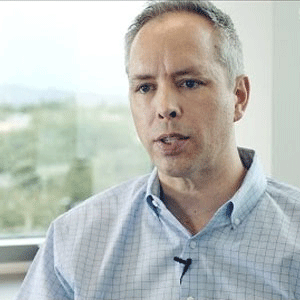THANK YOU FOR SUBSCRIBING

Revolutionizing Manufacturing Arena with IoT and the Industrial Internet
Brian Courtney, GM, AC Power System Product Line, GE Critical Power


Brian Courtney, GM, AC Power System Product Line, GE Critical Power
The term “Industrial Internet,” coined by GE four years ago, reflects the trend toward making industrial tools, equipment and processes more intelligent. The concept of the Industrial Internet is to generate, capture and analyze more meaningful operational data so equipment can be better serviced and maintained. The strategy focuses on the use of analytics to better understand industrial equipment so we can predict failures well into the future, and provide our customers time to plan and mitigate problems. Using these principles, a jet engine has 99.99999 percent reliability. If you can do this for a jet engine, why not a turbine, a diesel engine in a locomotive, or in a MRI unit in healthcare?
“The concept of the Industrial Internet is to generate, capture and analyze more meaningful operational data so equipment can be better serviced and maintained”
Along about the same time, this concept began being applied to the consumer electronics markets under the name, theInternet of Things (IoT) . Today these terms, IoT and the Industrial Internet often get interchanged. Equipment providers have leveraged these concepts and applied them to everyday commodity items like home thermostats and smoke detectors. In the industrial world, it has moved from high-end mechanical equipment to electrical equipment such as switchgear and uninterruptible power supply (UPS) systems. These concepts are creating substantial market opportunity that is projected into the hundreds of billions of dollars. So the question then is, how can you get into the game? The answer is Design for Analytics (DOA).
Today at GE, for all new product introductions, such as GE’s Critical Power TLE Uninterruptible Power Supply (UPS) systems, we apply a new methodology that we have dubbed, DOA. During the DOA process, the product team clearly defines the data generation, capture and analytics strategy. In the case of a UPS, for example, data is generated and captured at all points in the conversion of AC power to DC power (so batteries can be charged) and then back again to AC power. Once we have the ability to generate and capture needed data, we apply modeling to the system and overlay all known failure modes to get a complete picture of the system. For each failure mode we look to see if we can first catch the issue (to generate an alarm or event for the customer) and then we analyze the resulting data to see if we can predict the future state of a failure. To do this, we apply a multivariate analysis on the data to see if we can determine what correlates to each failure mode.
Next, the DOA process defines what sensory data is needed and helps identify which sensor needs to be added to the equipment. It also defines the data that needs to be captured and stored. To address storage needs, GE relies on a time-series database called Proficy Historian for both embedded data storage as well as for long-term storage retrieval and archive when the data is transmitted to our data centers.
A second key element is the ability to capture and analyze the data so that customers can be provided with information, rather than data. Today, GE monitors millions of assets across all of our business. In the Critical Power business, we offer monitoring services with predictive capabilities to help predict future failures and to optimize maintenance (minimizing expense) to our customers. To do that, we also have to design into our industrial equipment, the ability to not only capture data, but to store it on device and to transfer it to our monitoring centers. Our UPS systems are delivered with communication equipment that allows captured data to be sent to the GE monitoring center for analysis. The monitoring center captures data from our fleet of UPSs which is analyzed by a team of reliability engineers. The infrastructure needed to monitor and analyze this data was developed by GE and is also available commercially today. Once the data is analyzed it is also archived into a Hadoop cloud for further analysis. As analytic algorithms evolve, we are able to leverage the historical data to refine our accuracy and efficacy in our monitoring centers. As an original equipment manufacturer (OEM), it also enables us to analyze the data to compare future designs with existing equipment in order to validate when we “design away” failure modes and/or when we make improvements that extend the life of a component or the unit.
Of course, it adds expense to the bill of materials when you add more sensors, data capture, data transmission and the costs of the monitoring center. Why bother? Why incur the expense? GE sees two key value propositions in this. First, it increases reliability of our equipment which is the significant market driver in the Critical Power business. Second, is that it greatly increases the lifetime value of our equipment. Purchase price, runtime costs, service costs and longevity are all key elements in defining the return on investment (ROI) for a UPS. Through better management of a UPS, or any piece of industrial equipment for that matter, a customer can minimize runtime expenses and service costs to improve upon overall ROI. That’s the new baseline for brilliant machines.
Perhaps an example will help illustrate this for you. In an 8 megawatt datacenter our data collection and analytics helped us discover a hidden design issue in the customer’s power distribution network which caused substantial voltage distortions. With a standard technology, a customer would have experienced erratic faults on his servers and never discovered the root cause. With the Industrial Internet, GE was able to analyze and diagnose the problem remotely and show up on site with a repair kit, rather than a debugging kit.
The Industrial Internet is changing the game for all types of industrial equipment, from high value assets like turbines, to more common equipment like a UPS.GE’s drive to create brilliant machines has changed the landscape and how customers view equipment. It has raised the bar and created better returns for customers. In the end, isn’t that what it’s all about?
Check This Out: Top 10 APAC IoT Solution CompaniesCheck This Out: manufacturing outlook












